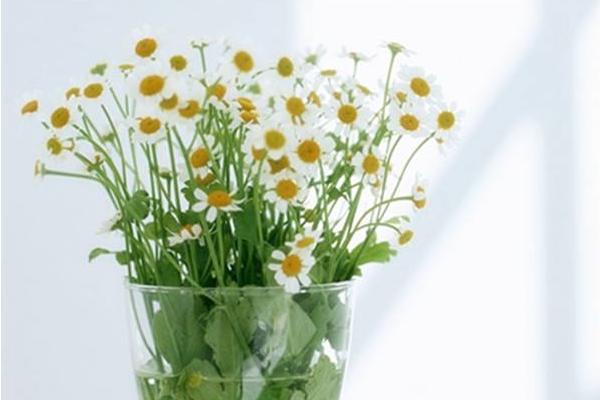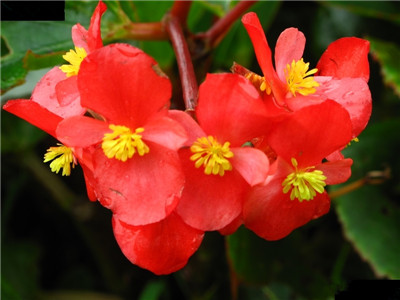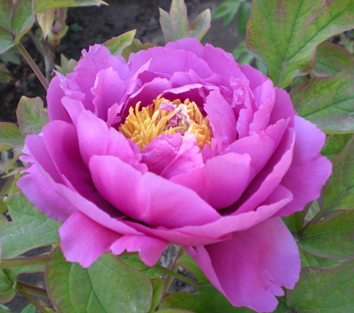Breeding methods and matters needing attention of Daisy Seeds
Daisies are perennial herbs belonging to the Compositae family, which are hardy and often cultivated every year. Some flower friends want to plant daisies, but they suffer from not knowing how to plant daisies. In fact, it is not so difficult to plant daisies.
Daisy seed planting is mainly carried out from August to September every year (this time is relatively best, because some flower friends have successfully sowed in October and May), and blossom 12-14 weeks after sowing. A loose and breathable medium should be selected for sowing. It is best to cover it with vermiculite (other media can also be covered), a thin layer, with no seeds for the degree.
Because the daisy seeds are very small and should not be sown on demand, they can be planted for once when the seedlings have 2-3 true leaves. After sowing, maintain a temperature of 18-20 degrees Celsius, 80-90% humidity, and germinate for 5-8 days. It can be sown in spring in Jiangsu and Zhejiang, but the growth and flowering of seedlings are not as good as those sown in autumn. So no spring sowing is needed.
Daily maintenance of daisies:
Light regulation: daisies also like sunlight, including during the growing and flowering periods. Sufficient light can promote plant growth, green leaves and increase the number of flowers.

How to raise daisies
The main results are as follows: 1. Transplant into the pot: the seedlings can be put into the pot after refining seedlings. At this time, the seedling already has three pairs of true leaves. If the seedling is raised with a hole plate, the root system is already full of the hole plate. 300px caliber nutrition bowls are often used in the upper basin. You don't have to change the basin after you put it on. Compound fertilizer can be added to the basin as base fertilizer. Pour root water in time after putting on the basin. Light regulation: daisies also like sunlight, including during the growing and flowering periods. Sufficient light can promote plant growth, green leaves and increase the number of flowers.
2. Temperature control: the pot can be moved to the protected area to survive the winter, which can prevent the potted flowers from freezing injury in winter. Daisies can survive the winter safely above 5 ℃, and keeping the temperature of 18-22 ℃ is the most suitable for the formation of good plants. In practice, it is very difficult to do so. Daisies can bloom normally at 10-25 ℃. When the temperature is lower than 10 ℃, the growth is relatively slow, the plant shape decreases, and the flowering is delayed. If the temperature is higher than 25 ℃, the flower stem will elongate, and the growth potential and flowering will decline. From May to June, the temperature rises, and the growth potential and flowering are not ideal, so autumn seedlings are generally used to avoid the rising temperature environment after May.
3. Water and fertilizer management: daisies like fertile soil, and the base fertilizer in its medium alone can not meet its growth needs. Therefore, topdressing fertilizer every 7-10 days, flower fertilizer can be used, compound fertilizer can also be used for point application or soluble water irrigation, and the concentration is 200~250ppm. But the effect of compound fertilizer application is not as fast as that of irrigation. Therefore, conditional water-soluble flower fertilizer can be used alternately. However, the amount of flower fertilizer should be reduced in winter, and the medium should be slightly dry, moist but not moist before watering. Because of its clustered basal leaves, if not ventilated, the basal leaves are easy to rot and infect bacteria. Sufficient water and fertilizer are given in the growing season to grow luxuriantly and prolong the flowering period.
Daisy culture method
1. From the end of August to the beginning of September, the seeds were planted on the pot seedling bed. After sowing daisies can not be exposed to the sun, should be shaded by curtain cloth, and should not be covered with transparent film. When the seedlings of daisies grow, remove the curtain.
2. when two or three leaves grow in the basin soil, the daisies begin to be planted. The daisies have bare roots without persistent soil. The basin soil is moist and properly watered. When the basin soil becomes dry and the curtain cloth is shaded for 2-3 days, it can be properly watered.
3. Loosen the soil and turn it over after two days. Prevent the overgrowth of leaves and stems after growing. Apply appropriate amount of fertilizer to the basin. In the coming year, the plant shape is short and strong, the stress resistance is strong, and the flowers are big, plump and colorful.
4. Daisies are resistant to cold, but afraid of air drying and frost. The thickness of matting can be determined according to the weather and the growth of flowers and seedlings, which can effectively control its flowering period and the growth of flowers and seedlings.
5. After one or two transplants in autumn, it can be directly planted in the flower bed in spring. If it is not transplanted in autumn, it can be cured in the basin soil with sufficient base fertilizer in spring. no, no, no.
6. Rotten leaf fertilizer was used as base fertilizer when planting. After planting, watering should be carried out every week or so.
7. Daisies do not have high requirements for fertilization, so it is not necessary to apply sparse fertilizer every 2-3 weeks, ploughing once a month, and stop fertilization after flowering in February.
Matters needing attention in the Culture of Daisy
Daisies do not tolerate cold and shade during their growing period and like places with plenty of sunshine, so they should be placed on the balcony to maintain its photosynthesis at all times.
If there is no seedling transplant after autumn, the seedling buds can be raised from the basin at the end of autumn, separated, with a little persistent soil in the root, and then grab a handful of humus fertilizer containing moist soil, and spray moisturizing to promote the vigorous growth of fibrous roots.
Sowing time
Daisies like cool climate, avoid heat, like light, and tolerate semi-shade. The optimum temperature for seed germination is 22-28 ℃, and the suitable temperature for growth is 20-25 ℃. The seeds are very small, with 4900 to 6600 seeds per gram, and most of them are sown in September, while in Zhejiang, they generally begin to sow in late July, mainly from late July to mid-August, when sowing New Year's Day is the heyday.
Through the above content, I believe you have a certain understanding of the culture technology of daisies. Many flower lovers like to breed at home. As a daisy plant, it does have a good effect on purifying the air and decorating space, but you must master the correct maintenance skills.
- Prev

How to raise four Seasons Begonia?
Crabapple flowers in four seasons have been loved by many people, so many people raise them in their own homes. There are many varieties of crabapple flowers in the four seasons, which have the advantages of round plant type, many and dense flowers, easy to plant with other flower bed plants, and long flowering and ornamental period in the four seasons. The following editor introduces the culture methods of the four seasons begonia.
- Next

To distinguish peony and peony, we should do four things
It is said that peony and peony are not mortal flower seeds, but a plague in the world in a certain year. Jade Girl or Flower God stole the elixir of the Queen Mother for the savior and scattered it into the world. As a result, some became peony roots, others became herbaceous peony roots. Peony and peony are sister flowers with similar appearance, and have always been called the best flower.
Related
- Fuxing push coffee new agricultural production and marketing class: lack of small-scale processing plants
- Jujube rice field leisure farm deep ploughing Yilan for five years to create a space for organic food and play
- Nongyu Farm-A trial of organic papaya for brave women with advanced technology
- Four points for attention in the prevention and control of diseases and insect pests of edible fungi
- How to add nutrient solution to Edible Fungi
- Is there any good way to control edible fungus mites?
- Open Inoculation Technology of Edible Fungi
- Is there any clever way to use fertilizer for edible fungus in winter?
- What agents are used to kill the pathogens of edible fungi in the mushroom shed?
- Rapid drying of Edible Fungi

